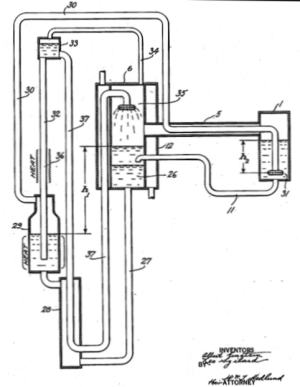1930: Albert Einstein and fellow nuclear scientist Leo Szilard receive an American patent for a new kind of refrigerator that requires no electricity. The most famous physicist of the 20th century wasn’t a Thomas Edison: The fridge would prove to be one of Einstein’s few forays into the world of commonplace engineering. The refrigerator uses chemical reactions of ammonia, butane and water to turn a heat input into a cold output. Though the fridge never became a commercial product, Swedish company Electrolux did license the scientific duo’s most promising patents. And in recent years, some academics have built coolers based on the cycle Einstein and Szilard described. Beyond the desire to retrace Einstein’s footsteps, the refrigerator is intriguing because it doesn’t use freon or electricity, which could make it a cleaner, simpler alternative in poor countries. The only problem is that compared to a modern refrigerator, Einstein’s design isn’t very efficient at cooling per unit of energy input. The Oxford team, however, thinks it can quadruple the cooling output with some tweaks to the system.
Einstein’s Refrigerator
Published November 11, 2011 Uncategorized Leave a CommentTags: Albert Einstein, chemical reaction, cooling cycle, engineering, freon, fridge, genius, heat transfer, inventor, Leo Szilard, nuclear scientist, patent, refrigerator, science, technology

0 Responses to “Einstein’s Refrigerator”